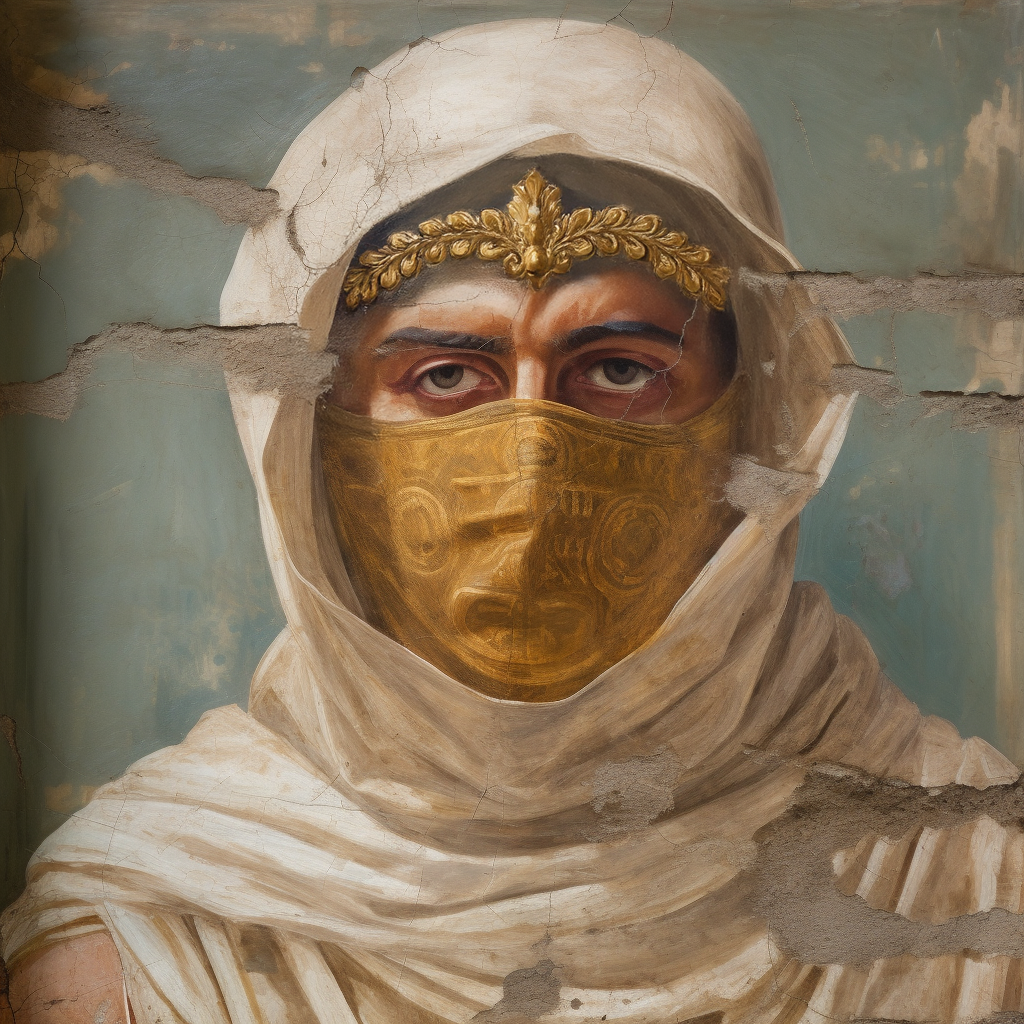Iamblichus
High Priest of Sol Invictus

Iamblichus was one of the final philosophers prior to the control of the enemy program in Rome. He was an Arab from Chalcis in Coele Syria, born to the Emesene dynasty and the priest kings of Emesa, the High Priests of the powerful and ancient Syrian city. His powers were profound and extensive, being a mysterious figure.
His legacy also deals with the profound importance of theurgy, which he was a master of. Significant contributions included synthesizing Platonic and Pythagorean teachings seamlessly and emphasizing religious rituals, mysticism, and theurgy (ritual magic) as paths toward union with the divine.
THE YOUTH OF IAMBLICHUS
His dynasty had birthed several Roman emperors and was highly prestigious, but to some extent had been disgraced by the wanton behavior of certain members within memory. Iamblichus was proud of his Syrian heritage and notoriously refused to Hellenize his name as was the custom of the day.
By this time period, Christians had infiltrated much of public life in the Near-East and Egypt. Iamblichus received his education from the bishop of Laodicea, Anatolius, who at the time ran a Peripatetic School based on Aristotle’s teachings. Although Iamblichus was wary of Christianity from an early age, Anatolius was a foremost scientist in mathematics and computation who was knowledgeable in the doctrines of Plato and Aristotle. At this school, gained direct access to the writings of both ancient philosophers and studied them intently.
At the same time, Iamblichus came upon the doctrines of Plotinus, the neo-Platonic philosopher who had rejuvenated aspects of ancient philosophy for a contemporary audience. Plotinus had attracted the attention of the emperors in Rome and cultivated a school in the city. His teachings about the Monad brought the dialogues of Plato closer to the structure of occult rites. Iamblichus also studied the life of Pythagoras and the Pythagorean theory of number, learning as much as he could about the great activities and teachings of this divine philosopher and his influences.
This led him to his next teacher, Porphyry, a very learned philosopher of fame in the Near East. Porphyry was an accomplished student of Plotinus who authored biography of his famous teacher and a work about the Demons. Also, as an avowed opponent of Christians, he had authored a work of some note against Christianity, Ad Chresteanos.
However, Iamblichus began to recognize something about Porphyry’s doctrines and approaches to spirituality were becoming increasingly confused and twisted, informed by an interest in Jewish mysticism. To him, it appeared as if his teacher had his feet in two camps and that he was departing from the doctrines of Plotinus in a sinister manner.
ROMAN PRIEST
In time, Iamblichus came to Rome. He followed on from Porphyry as the head of the Neoplatonic School established by Plotinus and undertook an internal oath to purge it of enemy influence, no mean task as a significant amount of the students of Porphyry were Christians. His circle became smaller as he decided to focus on his students devoted to the Gods and gave the Christians a more selective curriculum.
As can be ascertained from his heritage, the Syrian philosopher was not by any means a regular human being. Concerned with the encroachment of Christianity on public life, Iamblichus sought to recreate an authentic mystery school of the Gods devoid of overly complex symbolism and to bring the doctrines of Plotinus closer to the divine. To that end, he conducted a variety of investigations into all forms of paganism in the Roman Empire.
His followers and students were some of the most eminent men of the Mediterranean. Iamblichus was known to have accomplished certain feats of Magick and performed several miracles related to his abilities to call upon the Gods, acts which left his students stupefied:
When they had completed the task he had given them, they reported: “There is no particular reason for it, but this spring is called Eros, and the name of the one next to it is Anteros.” Immediately he touched the water with his hand [he happened to be sitting on the ledge of the spring where the overflow runs off] and uttering a brief summons he called forth a boy from the depth of the spring. The boy was white-skinned and of medium height, his golden locks provided a glow to his back and chest, and he completely resembled someone who was bathing or had just bathed. His students were overwhelmed with amazement, but Iamblichus said, “Let us go to the next spring,” and he rose and led the way, with a thoughtful air.
Then he did the same thing again on that spot and summoned another Eros resembling the first in all respects, except that his hair was darker and fell loose while gleaming in the sunlight. Both the boys embraced Iamblichus and clung to him as though he were their real father. He restored them to their proper places and went away after having bathed, while his pupils were filled with a deep sense of reverence. After this the crowd of his students sought no further evidence, but believed everything from the clear perceptual evidence that had been revealed to them and hung on to him as though by an unbreakable chain.1
He was also an important part of the history of education and systematization of this. From Plato and from Pythagoras prior to that, Iamblichus supported the idea of the quadrivium – the four arts of arithmetic, geometry, music and astronomy – as the foundation of a philosophical and spiritual education. Although his works were condemned, this found itself into medieval life, also due to the fame of his commentary on his edition of Nicomachus’ Introduction to Arithmetic.
All of Iamblichus’ works were banned and eradicated by the time of the ascendancy of Christianity in Rome. They were seen as particularly dangerous by the Church, not least because his works were highly accurate in nature and revolved around subjects such as theurgy, incarnating the essence of the Gods in an individual’s soul. Others attempted to create a systematized religious order, such as his work on Egyptian deities and rites under the name of Abammas.
Accordingly, the emperor Julian, who had been taught by a student of Iamblichus, drew upon his works to unite the pagans of the Roman Empire.
However, not everything was lost. In a maligned form, it was from Iamblichus’ works that we now have the benefit of many of the sigils of the Gods.
BIBLIOGRAPHY
1Lives of the Philosophers and Sophists, Eunapius of Sardis
Life of Proclus, Marinus
Iamblichus: On the Mysteries, Emma C. Clarke, John M. Dillon, and Jackson P. Hershbell

 አማርኛ
አማርኛ العربية
العربية বাংলা
বাংলা Български
Български 中文
中文 Čeština
Čeština Dansk
Dansk Deutsch
Deutsch Eesti
Eesti Ελληνικά
Ελληνικά Español
Español Français
Français हिन्दी
हिन्दी Hrvatski
Hrvatski IsiZulu
IsiZulu Italiano
Italiano 日本語
日本語 Kiswahili
Kiswahili Magyar
Magyar Македонски
Македонски नेपाली
नेपाली Nederlands
Nederlands فارسی
فارسی Polski
Polski Português
Português Română
Română Русский
Русский Slovenščina
Slovenščina Suomi
Suomi Svenska
Svenska Tagalog
Tagalog Türkçe
Türkçe